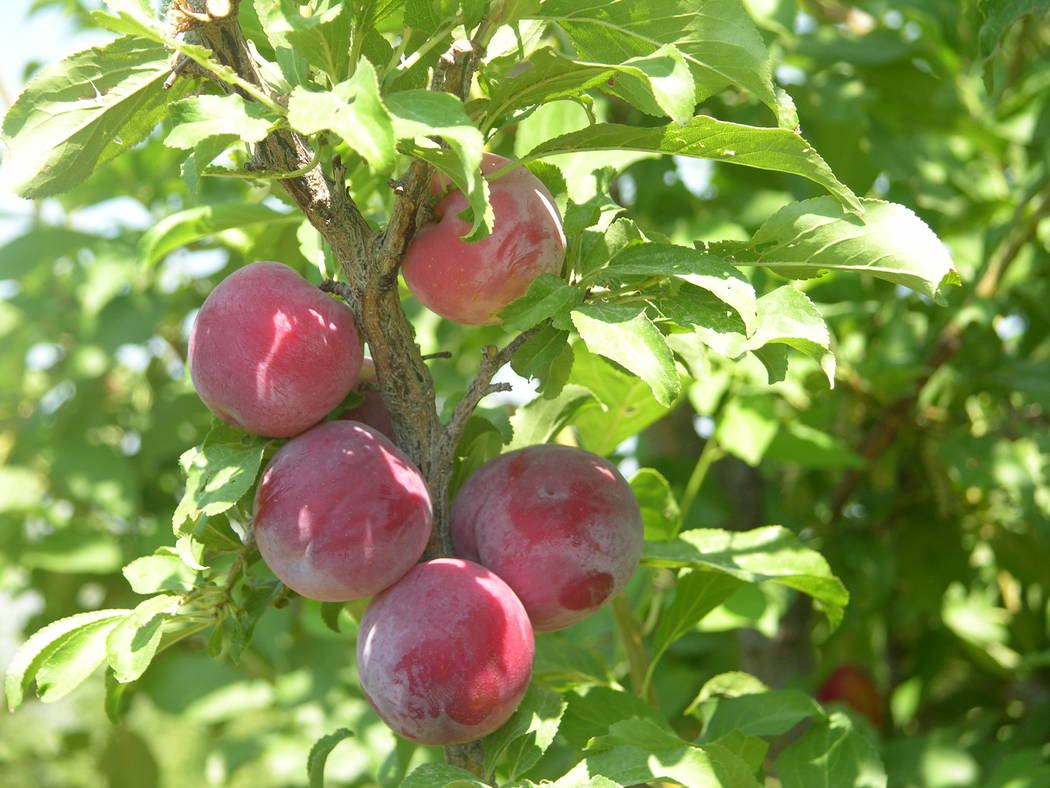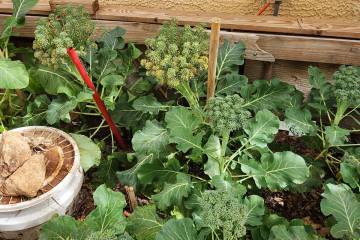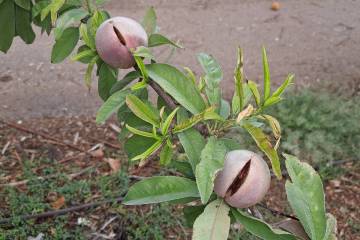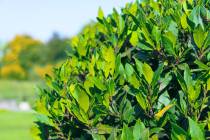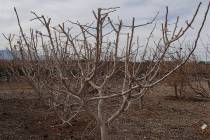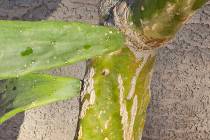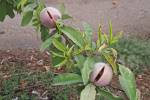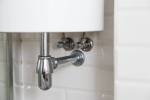Using fertilizer injector system depends on lifestyle
Q: I recently installed an underground fertilizer injector, and I was told to discontinue fertilizing by hand. Does this injector replace fertilizing plants by hand? Is it beneficial as a supplement? If so, how often should it be used?
A: If you are a serious gardener and you have a diversity of plants in your landscape, you will still need to fertilize important plants by hand. The people telling you this are not horticulturists or even serious gardeners. On the other hand, it depends on your lifestyle.
Your type of system has a plastic, underground tank that is filled with water with fertilizer dissolved in it. The fertilizer solution is sucked into the irrigation water as plants are irrigated. These systems are passive and don’t inject fertilizer into the water. So, they are not terribly accurate.
All plants getting irrigation water also get the same fertilizer put in the tank. Without getting into much detail, plants receiving more water also receive more fertilizer. The reverse is true. Those plants receiving less water, receive less fertilizer.
In my opinion, it is an out-of-sight, out-of-mind way of fertilizing plants. For some people, it will work and depends on your lifestyle.
Landscape plants can be very diverse in their need for fertilizer. Some landscape plants are fertilized once a year; others, multiple times a year. Some landscape plants like high-phosphorus fertilizers. Some landscape plants like high-nitrogen fertilizers. Some don’t like much fertilizer. Others like lots of fertilizer.
On the flipside, if you have lots of landscape plants that have similar fertilizer needs, then these types of devices can save you time and probably improve the look of your landscape. But I don’t think it will save you any money unless you learn and do it yourself.
Also, they aren’t as accurate as true injectors and proportioners. Commercial fertilizer injectors are expensive. They are meant for fertilizing lots of plants that have similar fertilizer requirements.
An example is a single crop of greenhouse plants grown commercially. They require precise applications of fertilizer to establish a uniform crop.
One major drawback I hear about is the cost of operating it after installation. The fertilizer can be expensive, but plants use less fertilizer if they are given it slowly. So, if you shop around, you can find less expensive fertilizers to use.
Most of the cost is paying someone knowledgeable enough to fill the tank and service it. Several cases have resulted in not using it anymore because of the expense. It would be a good idea to learn how to do it yourself.
If you are a die-hard gardener, establish a baseline of fertilizer needed by all plants and use the injector. Those plants requiring special fertilizer needs, apply fertilizer by hand or foliar applications as needed.
Situations where it might not work include raised vegetable beds, rose beds, citrus, cactuses and succulents. But, in most circumstances, you probably will see an improvement in landscape plant growth using it.
Q: Does the dirt used for container plants have to be replaced if you keep fertilizing or adding compost to it?
A: Dirt in containers (let’s call it soil) should be replaced regardless of whether it was fertilized with mineral fertilizer or compost. Container soils last longer by adding compost to the container soil rather than mineral fertilizers alone. Continual use of mineral fertilizers degrades the soil and eventually ruins it, which can happen rather quickly.
That is because it’s not possible to put the right balance of minerals back into the soil once it has been depleted. Soil replenishment depends on the type of plant you’re growing, the size of it and the amount of soil in the container.
I would replace container soil every two to three years when using only mineral fertilizers. The organic content is nearly gone by that time.
If you’re using compost to rebuild the structure and adding nutrients to the soil, you can get by for maybe four or five years, perhaps even longer. I don’t know exactly how long, but the soil should be replaced eventually because it will get depleted.
This mineral depletion and soil replacement relate to a concept promoted in the 1700s called Liebig’s law of the minimum. It basically states that as any important nutrient needed by a plant is deficient, this nutrient affects the growth of the plant regardless of the other nutrients present. It is the main principle behind the reason for adding rock dust to a soil.
Adding other nutrients might be more than necessary for the plant, but if only one nutrient is in short supply, this one nutrient is the limiting factor controlling plant growth and health. Unless you spend about $70 to $100 for a soil analysis, you don’t know which nutrient is in short supply. So, you don’t know which fertilizer to add and how much.
It’s cheaper to replace the soil in the container than to submit a sample for a soil analysis and then buying the right fertilizers dictated by the soil analysis.
Q: I am planting a Santa Rosa plum tree after I read from your blog that was one of the best for the Las Vegas Valley. Do I need two of these Santa Rosa fruit trees to get fruit, or is one tree enough?
A: Santa Rosa plum is a good, old-fashioned plum. Plums do well in the eastern Mojave Desert. It is a midseason soft fruit around late June or early July.
It is self-fruitful, so it does not need a pollenizer tree. It is, however, a very good pollenizer for several pluot fruit trees in case you go in that direction later. That is a primary reason I recommend it.
Remember to dig the hole for it 3 to 4 feet wide and mix about half a cubic foot of compost with the soil where it is planted. Paint the trunk and limbs with latex (not oil-based) white paint diluted with an equal amount of water for sunburn protection on the trunk and limbs. That helps keep the borers from attacking it.
Water it thoroughly as you are planting to remove air pockets in the soil.
Stake the tree for one season of growth with a stake driven through the root ball into the soil beneath it. Wrap the trunk and stake together with green nursery tape to keep the root ball from moving during the first year of growth. Then remove it the start of the second year.
Q: What is the real difference between garden soil and potting soil, and can they be used in place of each other?
A: Most potting soils are very low in biological activity (microorganisms) and are a relatively sterile plant medium. I call potting soil a medium because it really doesn’t need to contain any soil at all.
It is a mixture of amendments, such as perlite, fine wood products and peat moss, that focus on making the soil light in weight, easily drained but still hold water, and sterile of biological organisms of all kinds. Potting soil is more desirable if it is sterile because of plant diseases and insects.
Garden soil is rich in organics and biological activity. They are heavier and very chemically diverse. Manufacturers of potting soil might add a little bit of fertilizer to their potting soil so that plants grow well after planting in it. But those fertilizers are added by the manufacturer. It’s not in the medium without adding.
The biggest complaint I get from homeowners when using a good brand of potting soil such as Fox Farm is the presence of fungus gnats. That is because the potting soil is not sterile. Ingredients are added by Fox Farm, perhaps compost, for its biological activity, which makes it expensive but a big no-no for major manufacturers of potting soils.
I would not recommend using a potting soil as a substitute for a garden soil. But potting soil might make a good amendment for garden soil.
People don’t want the hassle of fungus gnats. So, if you buy a good potting soil and you want to kill fungus gnats, put it in a clear plastic bag for a couple of days in full sun and let it cook. If the temperature inside the clear plastic bag gets up to about 160 degrees for just 30 minutes, the fungus gnats will be gone.
Bob Morris is a horticulture expert and professor emeritus of the University of Nevada, Las Vegas. Visit his blog at xtremehorticulture.blogspot.com. Send questions to Extremehort@aol.com.



